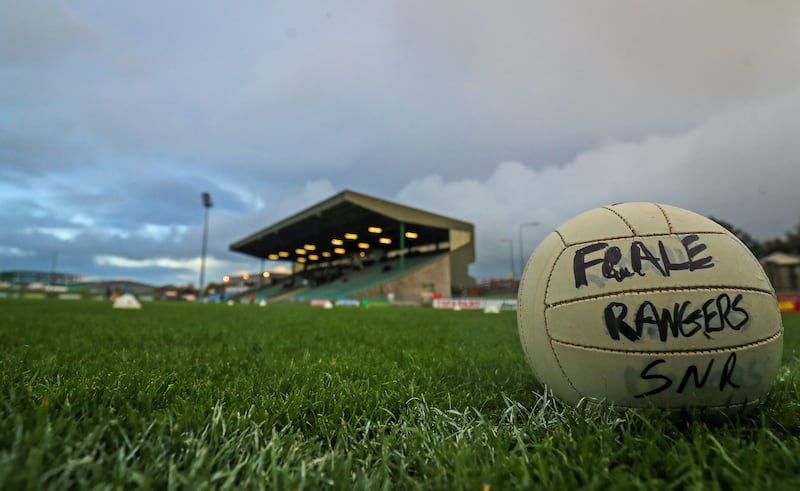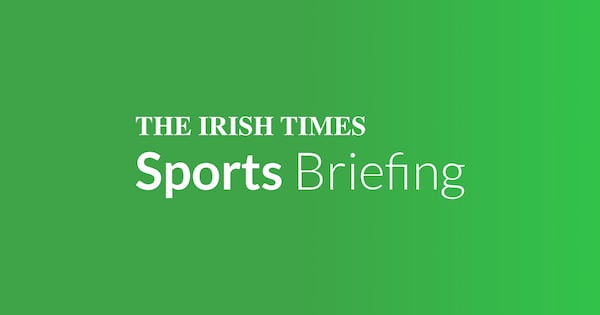In GAA clubs, people are self-absorbed. It is not a fault. There is too much to do. Every crisis is local. Have we players? Have we a pitch? A first aid kit? Have we a chance? Global stuff is outsourced.
The GAA has a crisis with spending on teams and an existential crisis with rural depopulation and managing the population explosion in Dublin and its hinterland. But none of that feels like your business when the dressingroom is locked and nobody has a key.
It is human nature. People are less inclined to be worked up about stuff until it lands at their door. You can tell people that there’s a crisis they should care about, and they will nod and stare back with dead eyes.
Anyway, here goes. There’s a crisis in the GAA that you should care about.
In a fascinating piece by John Harrington on GAA.ie at the weekend, Benny Hurl tried to put it as bluntly as he could without sounding hysterical. Hurl is the chair of the GAA’s national committee on demographics, one of the most consequential roles in the association. He is intimate with the numbers and the trends, and he can see the edge of the cliff.
“Successive governments have allowed rural depopulation to occur,” Hurl said. “More and more and more people are gravitating towards the towns and the cities. We are where we are now and we’re sleepwalking into something that’s going to be catastrophic.
“We are at a crossroads. There are so many clubs out there that are under huge pressure and it’s not just a rural issue, it’s an urban one too. We have 1,610 clubs now and if there’s not some sort of intervention very soon then many of those clubs will no longer be around. The local impact of losing a GAA club would be monumental, it would be unimaginable.”
In the western half of the country there are hundreds of case studies to illustrate the ground being cut from under the feet of clubs. In Connacht, for example, 213 clubs are serving just 8 per cent of the island’s population. As it stands, there are simply not enough people for all of those clubs to have a viable future.
In contrast, Dublin and its commuter belt – stretching south to Gorey, north to Drogheda and west to Tullamore – has just 290 clubs for 2.3 million people, a third of the population of the island. In that part of that country, there are simply not enough clubs to satisfy the needs of everyone who wishes to have a life in the GAA. It’s like trying to pour a quart into a pint pot.
Every crisis is local. At the Kerry county board meeting last week Shannon Rangers and Feale Rangers asked if they could amalgamate into one team for the senior football championship, after decades of bitter rivalry. Both teams are already an amalgamation of smaller clubs in north Kerry – six in the case of Shannon Rangers and seven in the case of Feale Rangers. The numbers, though, no longer added up.

“Traditionalists in both Feale and Shannon Rangers had opposed a move to amalgamate when it was suggested previously,” wrote Murt Murphy in the Irish Examiner, “but it appears pressures from the younger brigade in north Kerry have won out.”
You can imagine the agonising. The tribalism at the heart of the GAA is crystallised by our feelings for our neighbours. Any club championship without bad blood would be unviable. At age-grade levels, though, Shannon Rangers and Feale Rangers had already set aside generations of enmity in order to field competitive teams. Though it was an arranged marriage, maybe they could learn to love in the long run. A critical mass of people understood that it was the only future.
It is a sign of the times that every county board must have a demographics officer now. The granular data available to them removes all mystery about depopulation black spots. In his terrific presentation to convention, the Kerry demographics officer Michael Murphy graphically illustrated the issues facing Shannon Rangers. The 12 primary schools in their catchment area had seen their total enrolment drop from 784 boys to 486 over the last 30 years. There was no suggestion that the trend would be reversed.
Kerry is an interesting case. As Murphy points out, the population of the county has increased in every census since 1991, but much of that population growth in centred in mid-Kerry and the big towns of Killarney and Tralee. Other parts of the county, though, have been ravaged by emigration and a lack of affordable housing. In parts of south Kerry, in particular, the market has been overheated by non-residents snapping up properties as holiday homes or investments.
In Kerry, there are no “super clubs”. Only seven clubs have more than 200 youth male playing members. A staggering 29 clubs are involved in amalgamations at minor level.
Every year Kerry are one of the favourites for the football All-Ireland. They have won five minor football All-Irelands in the 13 years since Dublin won their last title in that grade. Looking in from a distance, and without paying attention, you wouldn’t think that Kerry were dealing with a demographic time bomb. The data tells a different story.
It is a complex issue that will require a suite of solutions and open minds. In many places, hard-to-swallow amalgamations will be the only means of survival. In big urban centres, but particularly Dublin, Hurl is unconvinced about the viability of starting new clubs when there are existing clubs that could be regenerated.
“There are lots of clubs in urban areas that could do with additional players,” says Hurl. “‘Super clubs’ with huge memberships haven’t just grown in Dublin and other urban sprawls because they’re the only club in their area, they’ve also drained talent from less successful clubs around them. In some urban areas you have people driving past clubs to get to the better club.”
This is not just a GAA issue, it is a societal issue for which the GAA “acts as a mirror” in the words of Peter Horgan, the GAA’s strategy, insights and innovation manager. The GAA has more than 550,000 members. The life of the nation courses through it.
This is probably the greatest challenge facing the GAA since its foundation. It might not have reached your door yet. Don’t assume it won’t.


















